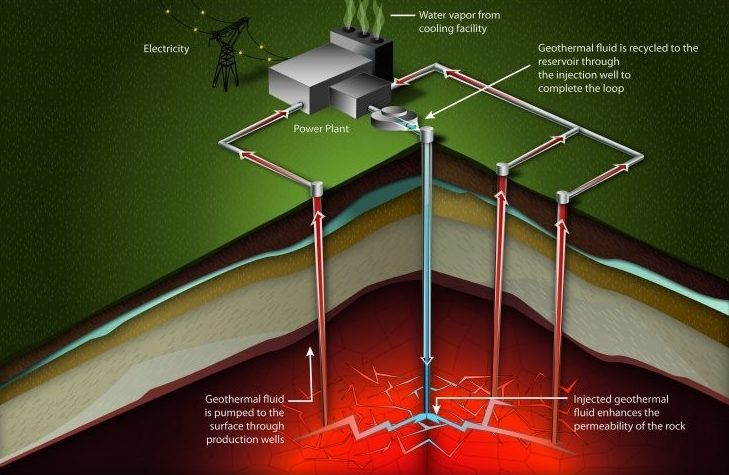
New research has found that advanced geothermal systems are well suited to the storage of renewable power, and that they could do so at minimal cost compared with other technologies.
People have been using naturally occurring hot springs for cooking, heating their homes, and even taking baths for thousands of years. We call this type of energy geothermal. One form of renewable energy extracted from the Earth’s core is geothermal energy. It originates from heat produced during the planet’s initial creation and radioactive material decay. This thermal energy is found in liquids and minerals at the core of the earth.
Geothermal systems. How are they used?
It has been a part of heating systems and cooking for thousands of years in certain places. In addition to being used for other heating and cooling purposes, the subterranean geothermal reservoirs of steam and hot water can be utilized to generate power.
One example of heating and cooling is where a geothermal heat pump is installed around 10 feet underground. One can either fill these pipes with water or with an antifreeze solution. The closed loop of pipes is filled with water by pumping. These ground source heat pump systems help to cool buildings in summer and maintain warmth in summer. This occurs by absorbing the earth’s heat as the water circulates back into the building.
Homes and businesses have utilized geothermal water for district heating as well as to assist in the growth of plants in greenhouses. It can also be piped under roads to melt snow.

The requirement to store the electricity produced by solar and wind power sources grows along with their capacity to produce renewable energy. This is because power from renewables can fluctuate, as the sun doesn’t always shine and the wind doesn’t always blow.
Batteries and other forms of storage technology are frequently used to store extra energy during periods of low demand and release it during periods of high demand, guaranteeing a consistent supply to the grid. But according to recent studies, sophisticated geothermal systems can store renewable energy effectively and affordably when compared to alternative technologies.
Advantages and disadvantages of the geothermal systems
As a source of renewable energy, the main advantages of geothermal systems are environmental. Only one-sixth of the carbon dioxide released by a clean natural gas power plant is produced by it. Geothermal is also cheaper than conventional energy, with savings of as much as 80% compared with fossil fuels.
It’s always there, unlike other renewable energy sources like wind and solar power. Despite being inexpensive, sustainable and environmentally-friendly, geothermal is not without its drawbacks. The first is that production is restricted to regions close to tectonic plate borders. Furthermore, places that have been used for decades may cool off.
Although it is cheaper than fossil fuels once a plant has been built, the drilling and exploration of these sites is expensive. This is partly because of how much damage drills and other instruments get in such harsh settings. The gas known as hydrogen sulfide, which smells like rotten eggs, can be released by geothermal facilities. Lastly, minor concentrations of hazardous compounds found in some geothermal fluids must be disposed of.
Original source: World Economic Forum
Original source: World Economic Forum
Why do we need energy storage systems? Find out here.

How rapidly will the global energy storage market grow?
Global installed energy storage capacity is forecasted to expand 56% to reach over 270 GW by 2026.
The primary force behind this is the global demand for more system storage and flexibility in order to fully integrate and utilize higher percentages of variable renewable energy into power networks.
Compressed air storage solutions are being developed by Universal Kraft in collaboration with partners. Creating a novel technology that involves using a compressor to pump air into a tank or the ground for storage, which is subsequently reversed to feed a generator with energy when needed.




